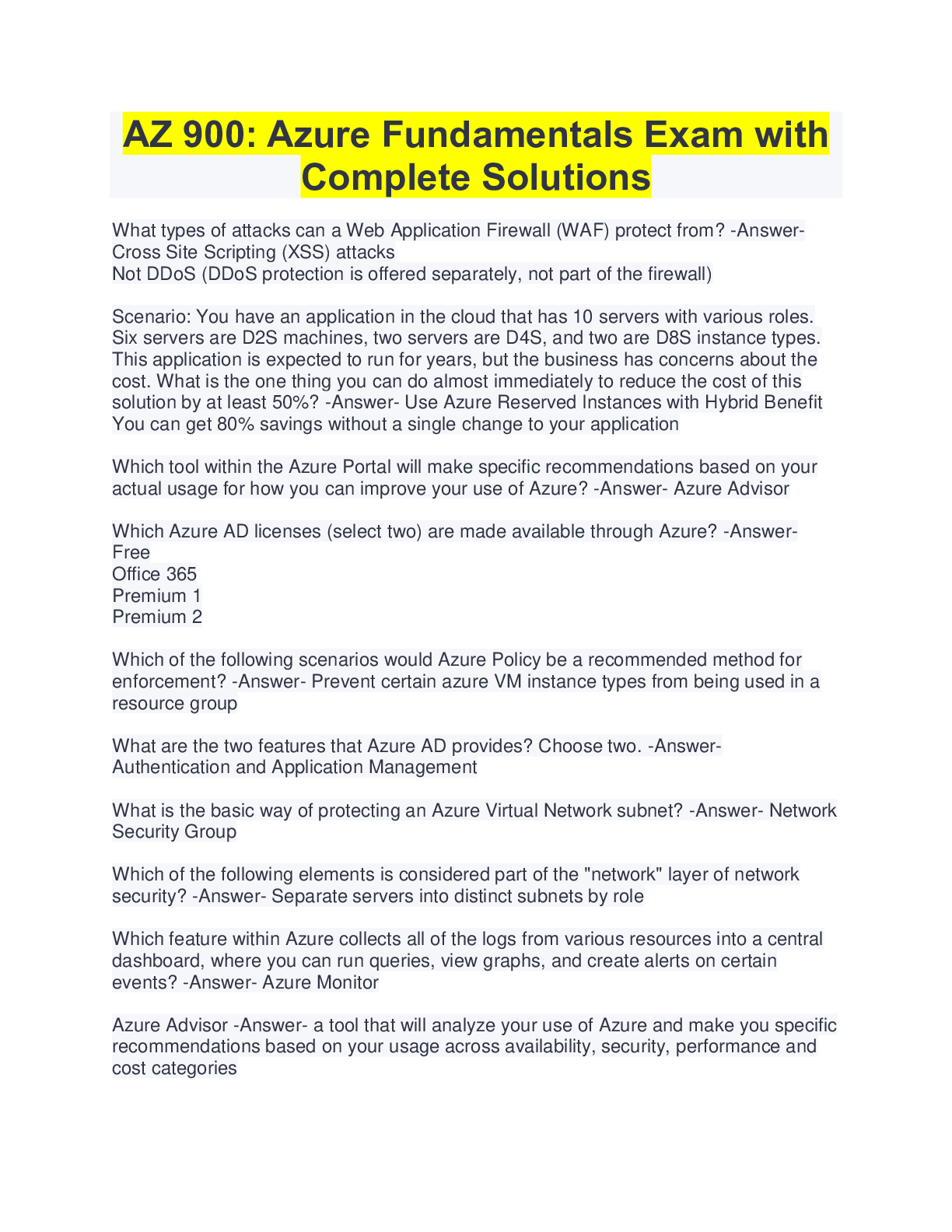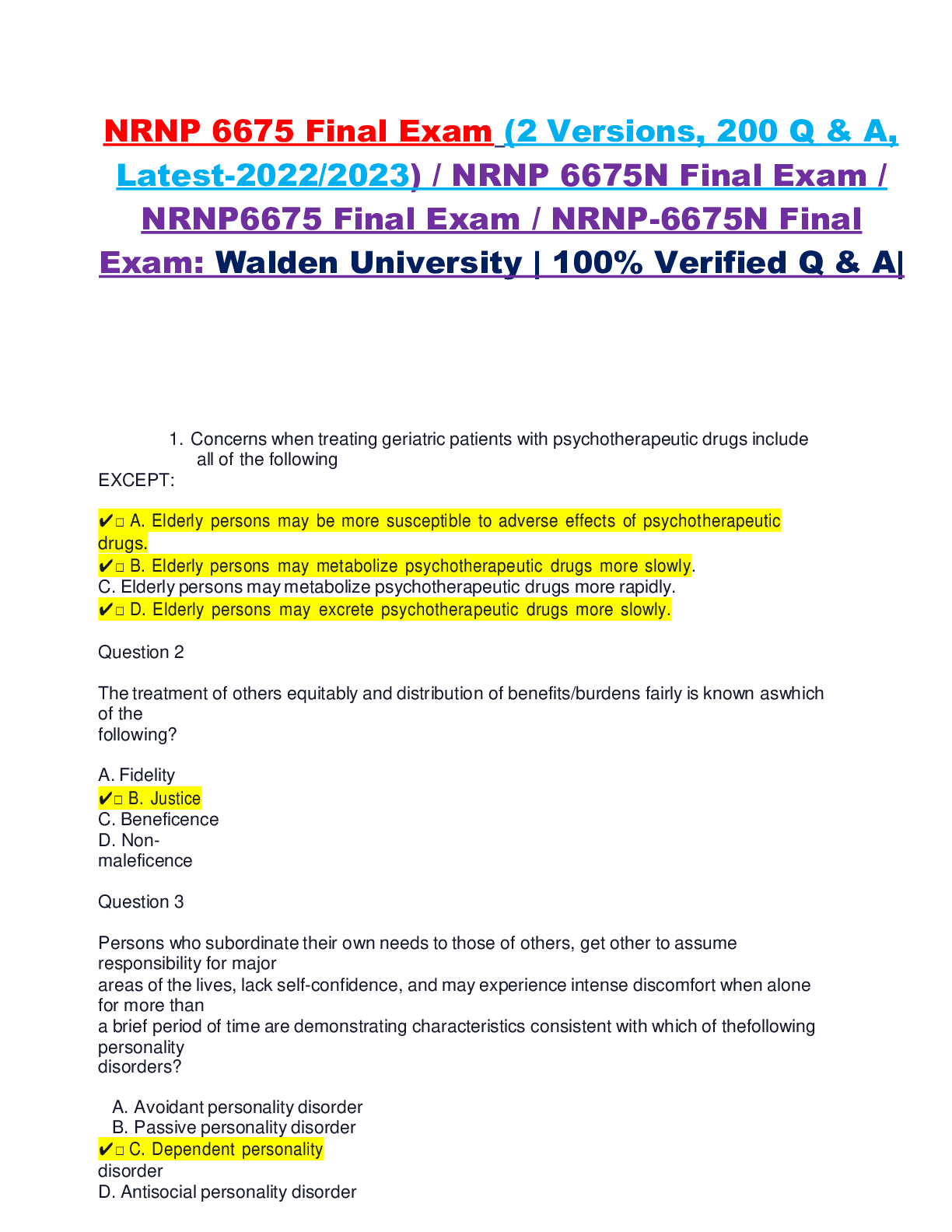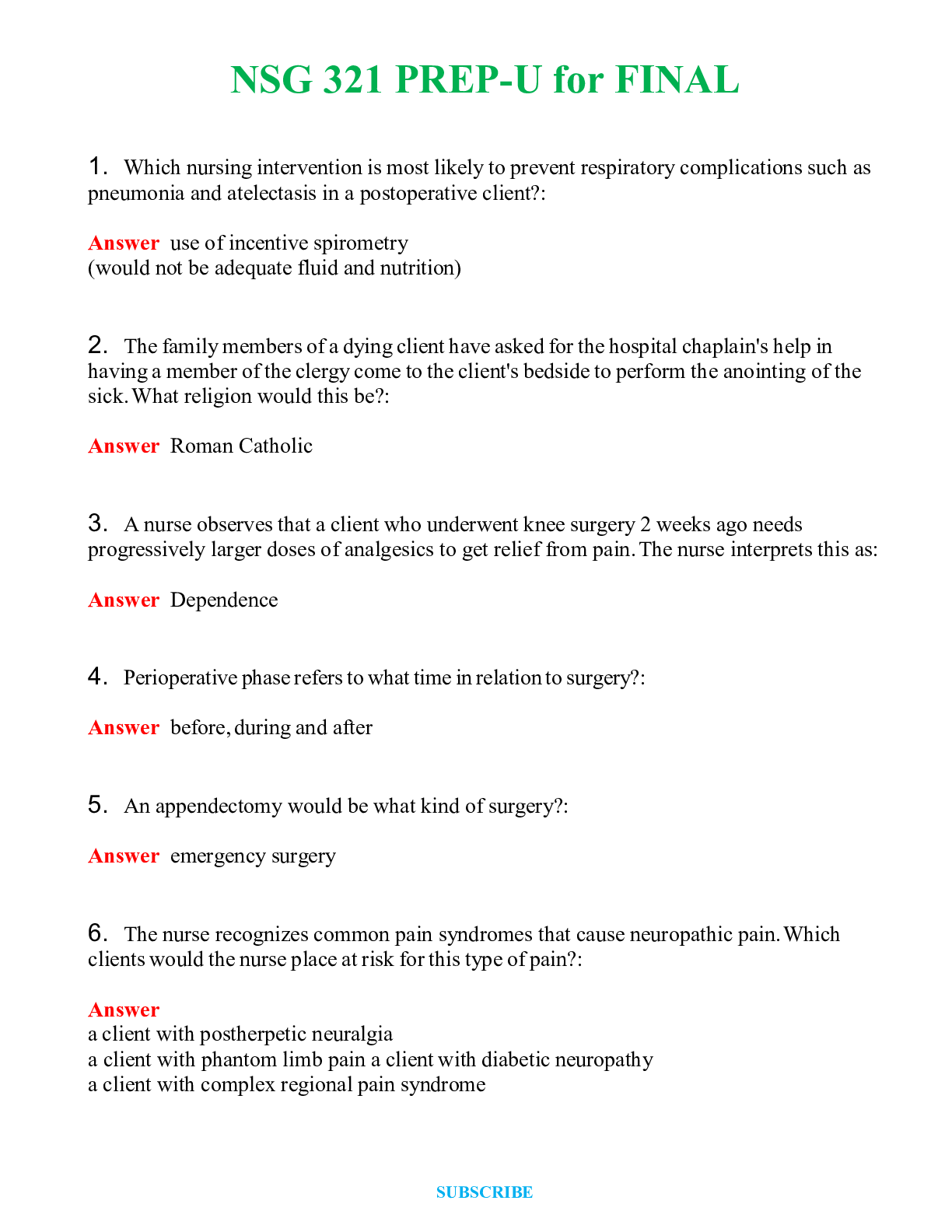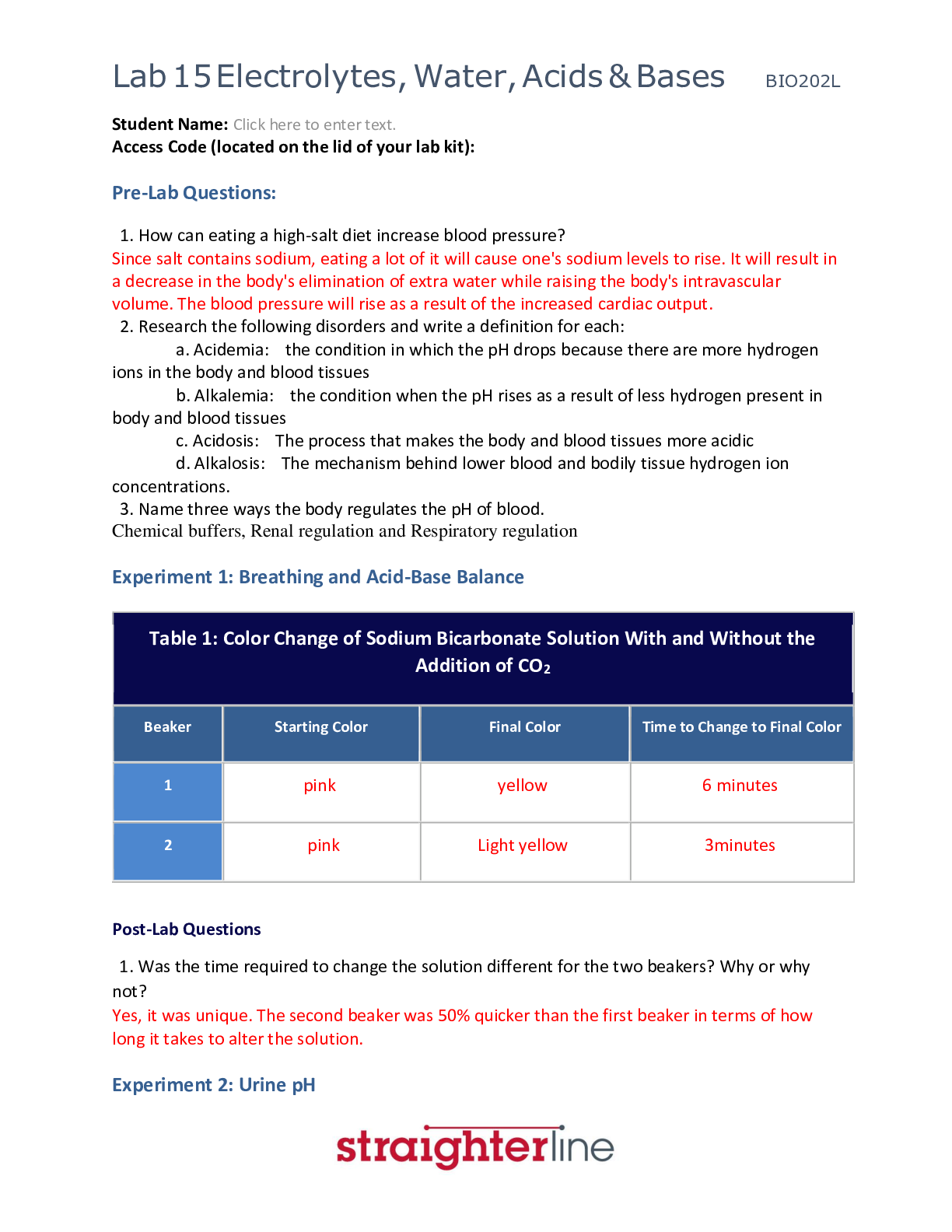Computer Science > EXAM > Microsoft Certified Azure Fundamentals Exam (AZ-900) QUESTION WELL SOLVED 2022 (All)
Microsoft Certified Azure Fundamentals Exam (AZ-900) QUESTION WELL SOLVED 2022
Document Content and Description Below
What are some computing services offered by a Cloud Provider? •Compute power - e.g. Servers or web applications •Storage - e.g. Files and Databases •Networking - e.g. secure connections betwe... en the cloud provider and on-premises. •Analytics - e.g. visual telemetry and performance data Jim the systems admin at a fictitious company is an absolute control freak! From the list below, choose the most appropriate cloud solution for him: a). Virtual Machines b). Containers c). Serverless compute ANSWER: a). Virtual Machines. Because he will emulate a physical system, Jim can do whatever he likes (e.g. install software, configure updates etc.) Give the simplest definition of a container. A container is similar to a VM but it doesn't need a guest operating system. What is Server less Computing? Serverless computing lets you run application code(e.g. functions) without creating, configuring, or maintaining a server. When compared to VMs and Containers, it is the lightest and fastest deployment method. Rob is new to cloud computing and is confused by the terms: "Vertical Scaling" and "Horizontal" scaling. Give him a brief rundown on the differences between the two! Vertical scaling: aka "scaling up", is the process of adding resources to increase the power of an existing server. Some examples of vertical scaling are: adding more CPUs, or adding more memory. Horizontal scaling: aka "scaling out", is the process of adding more servers that function together as one unit. For example, you have more than one server processing incoming requests Define: Scalability as it relates to cloud computing You can increase or decrease the resources and services used based upon the needs of your organization. Define: Elasticity as it relates to cloud computing As your workload changes due to a spike or drop in demand, a cloud computing system can compensate by automatically adding or removing resources. (e.g. a web-site during Black Friday Sale) Define: redundancy as it relates to cloud computing If one component fails, another is available to take its place and its workload. Define: fault-tolerance as it relates to cloud computing Customers and end-users are not impacted when a disaster occurs. Misha the cloud computing class nerd wants to engage you in a discussion on Economies of Scale. Start the conversation off with an adequate definition and an example. Economies of scale is the ability to do things more efficiently or at a lower-cost per unit when operating at a larger scale. In other words, more money is saved, when production rates are higher. Users also pay less for power consumption, cooling and network connectivity than they would with on-premises infrastructure. Compare / Contrast CapEx(Capital Expenditure) vs. OpEx(Operational Expenditure) •Capital Expenditure: the spending of money on physical infrastructure up front, and then deducting that expense from your tax bill over time. CapEx is an upfront cost, which has a value that reduces over time. •Operational Expenditure: spending money on services or products now and being billed for them now. You can deduct this expense from your tax bill in the same year. There's no upfront cost. You pay for a service or product as you use it. What is the primary benefit of CapEx? Fixed Costs and a predictable expense for your budget! Companies on a tight budget will lean here. What is the primary benefit of OpEx? Grows if demand is increased and shrinks accordingly. For new companies / startups this will make lots of sense. What is Cloud agility? Cloud agility is the ability to rapidly change an IT infrastructure to adapt to the evolving needs of the business. For e.g. if your service peaks one month, you can scale to demand and pay a larger bill for the month. If the following month the demand drops, you can reduce the used resources and be charged less. This agility lets you manage your costs dynamically, optimizing spending as requirements change. Describe the Public Cloud Microsoft Azure is a public cloud provider. There is no local hardware to manage or keep up-to-date - everything runs on your cloud provider's hardware. In some cases, you can save additional costs by sharing computing resources with other cloud users. Give one example of where you would use a public cloud solution Deploy a website or blog. The web-server is handled by the cloud provider. You only worry about managing the site itself. Give three disadvantages to using a public cloud model. •Security Requirements •Government Policies •Business requirements for a legacy software / application. Describe the Private Cloud In a private cloud, you create a cloud environment in your own datacenter and provide self-service access to compute resources to users in your organization (You take the place of Microsoft Azure). Give one example of where you would use a private cloud solution An organization has data that cannot be put in the public cloud, perhaps for legal reasons. An e.g. may be where government policy requires specific data to be kept in-country or privately. Give three disadvantages to using a private cloud model. •Initial CapEx costs and must purchase the hardware for startup and maintenance •Owning the equipment limits agility - to scale you must buy, install, and setup new hardware •Private clouds require IT skills and expertise. Describe the Hybrid Cloud Combine public and private cloud(on premises data-center). Simple as that. What can be a primary disadvantage of the Hybrid Cloud? Humongous expenses. Running both cloud + on premises is typically very costly! (It might be necessary in a scenario with legacy Line-of-Business software) Describe Infrastructure-as-a-Service (IaaS) You have complete control over the hardware that runs your application (Servers and virtual machines (VMs), storage, networks, and OSes). Instead of buying hardware, with IaaS, you rent it. It's an instant computing infrastructure, provisioned and managed over the internet. Describe Platform-as-a-Service (PaaS) Primarily used to build, test and deploy applications, and you can perform all of these actions without managing the underlying infrastructure. Describe Software-as-a-service (SaaS) Software is centrally hosted and managed for the end customer. It is usually based on an architecture where one version of the application is used for all customers, and licensed through a monthly or annual subscription. Office 365, Skype, and Dynamics CRM Online are perfect examples of SaaS software. With regards, to the burden upon the customer, which of the following provides the least burden? a). IaaS b). PaaS c). SaaS ANSWER: c). SaaS On the other extremity, IaaS provides the greatest burden to the customer, with PaaS balancing between Saa [Show More]
Last updated: 1 year ago
Preview 1 out of 15 pages
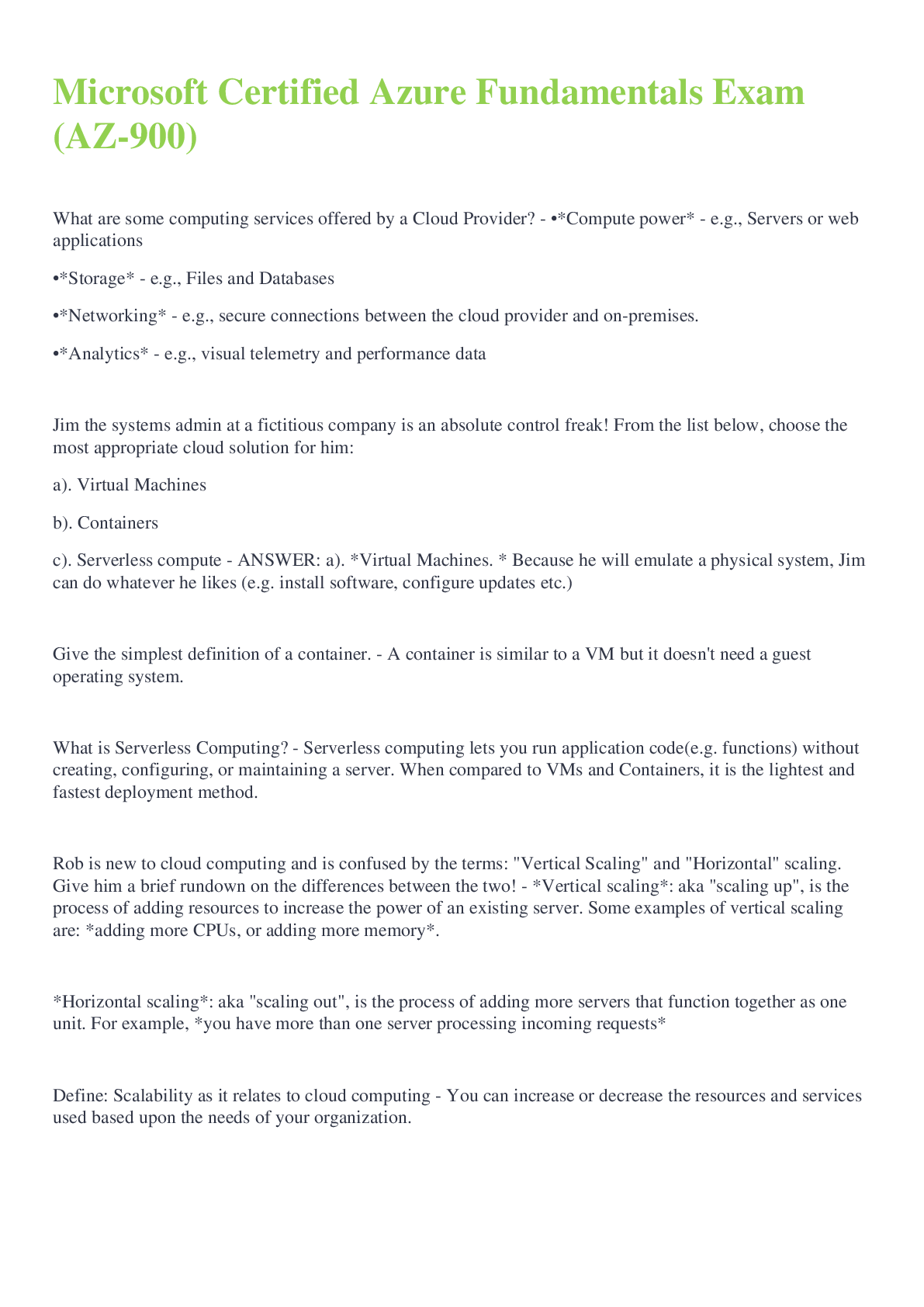
Reviews( 0 )
Document information
Connected school, study & course
About the document
Uploaded On
Oct 19, 2022
Number of pages
15
Written in
Additional information
This document has been written for:
Uploaded
Oct 19, 2022
Downloads
0
Views
57


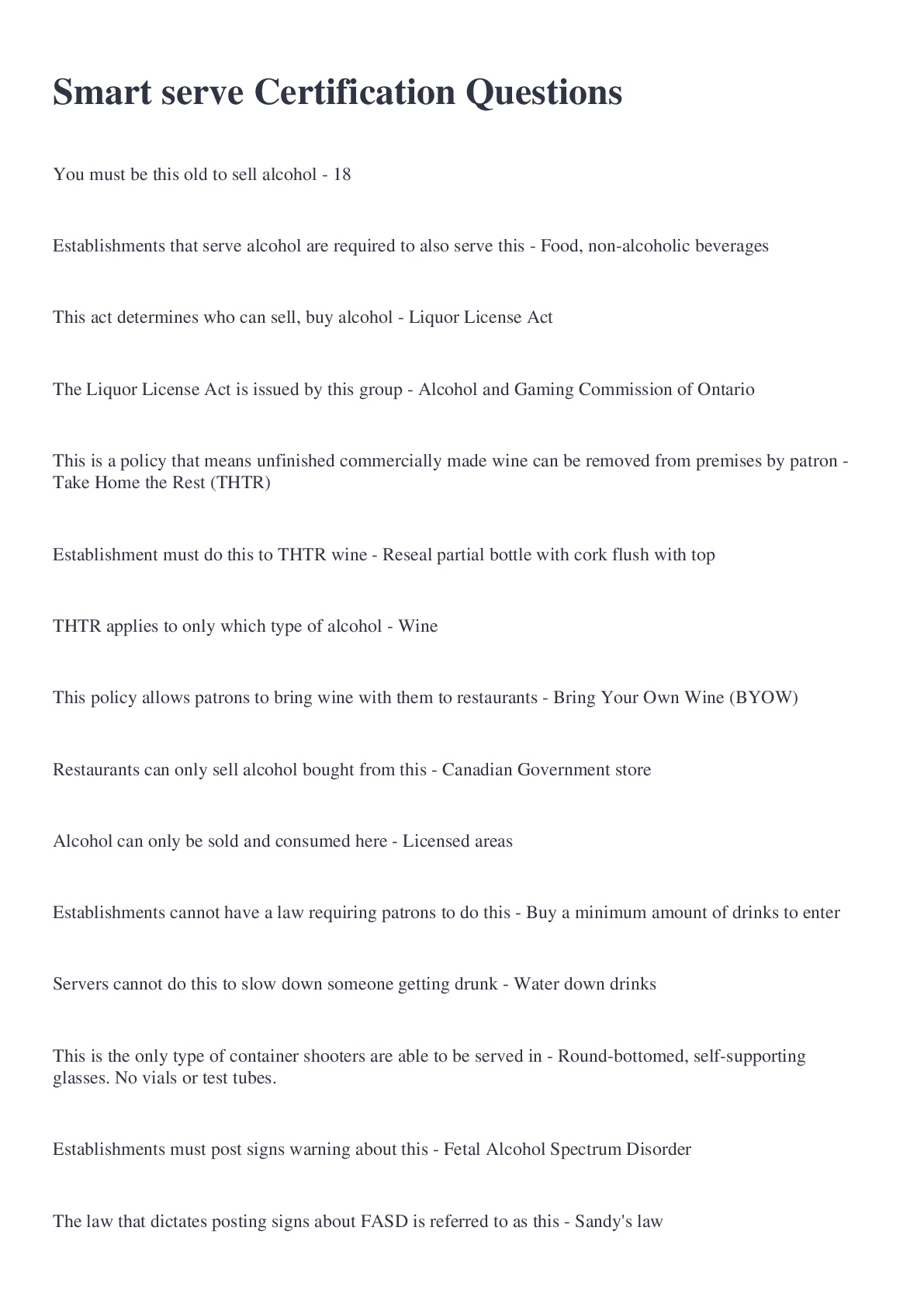

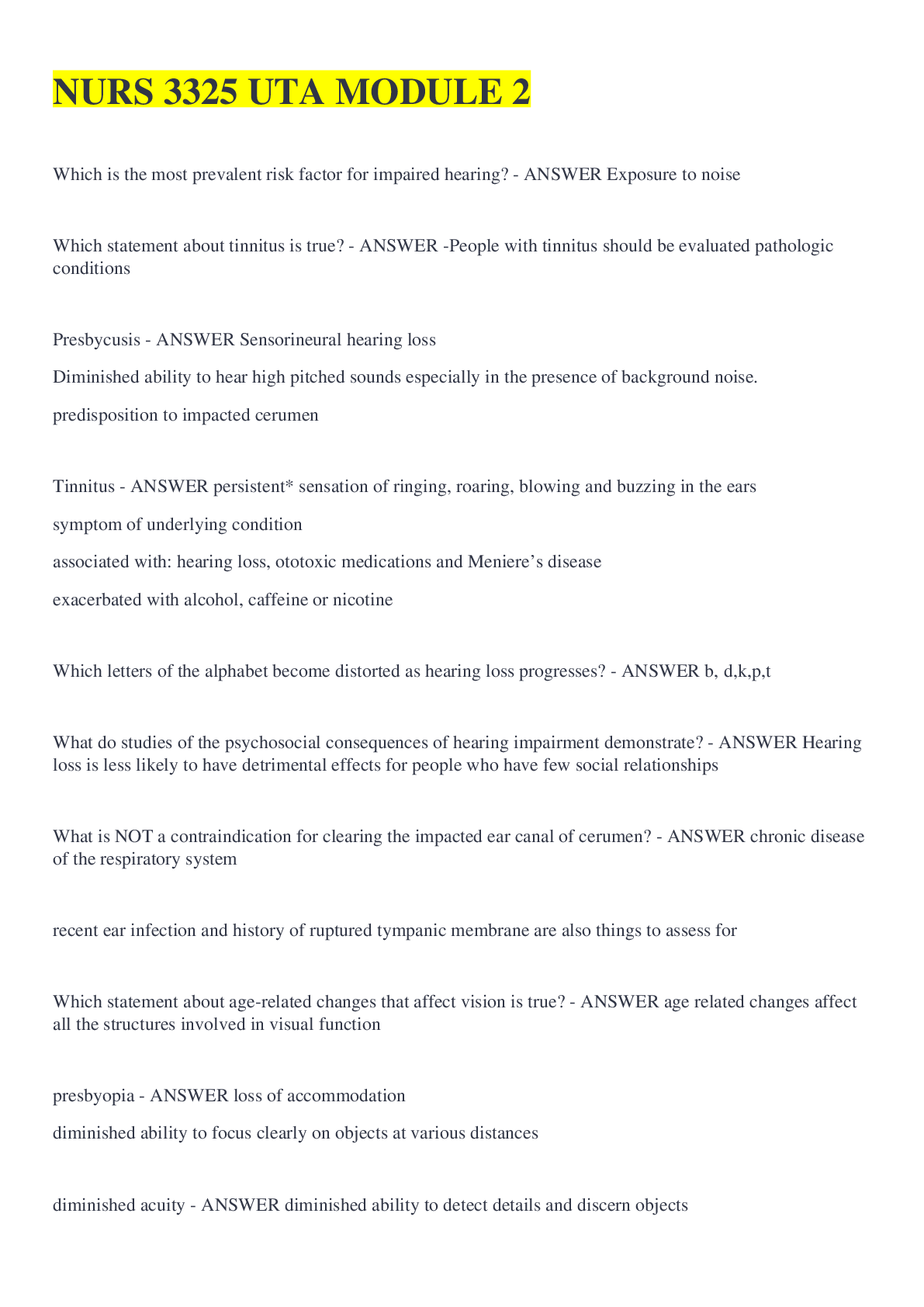
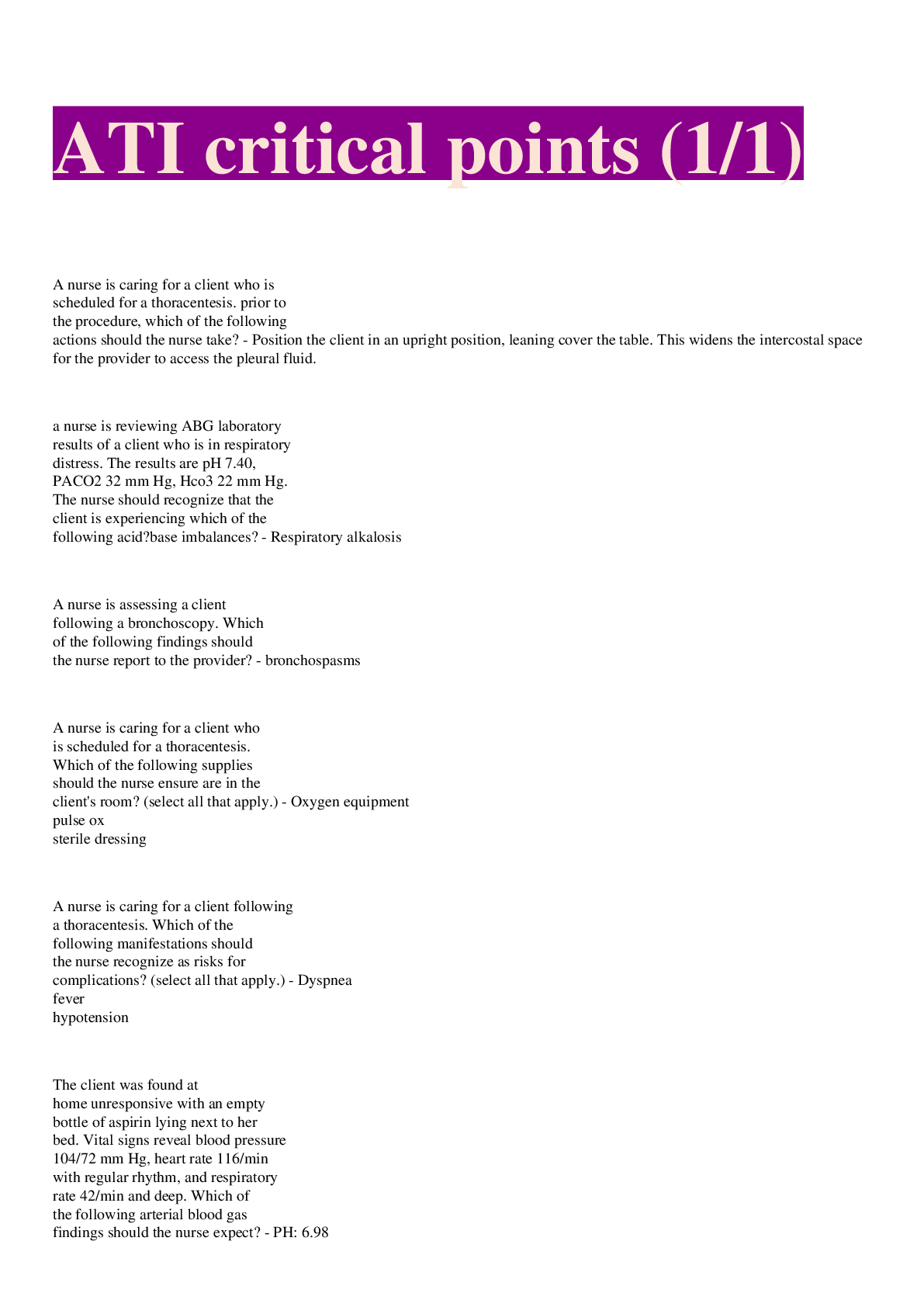
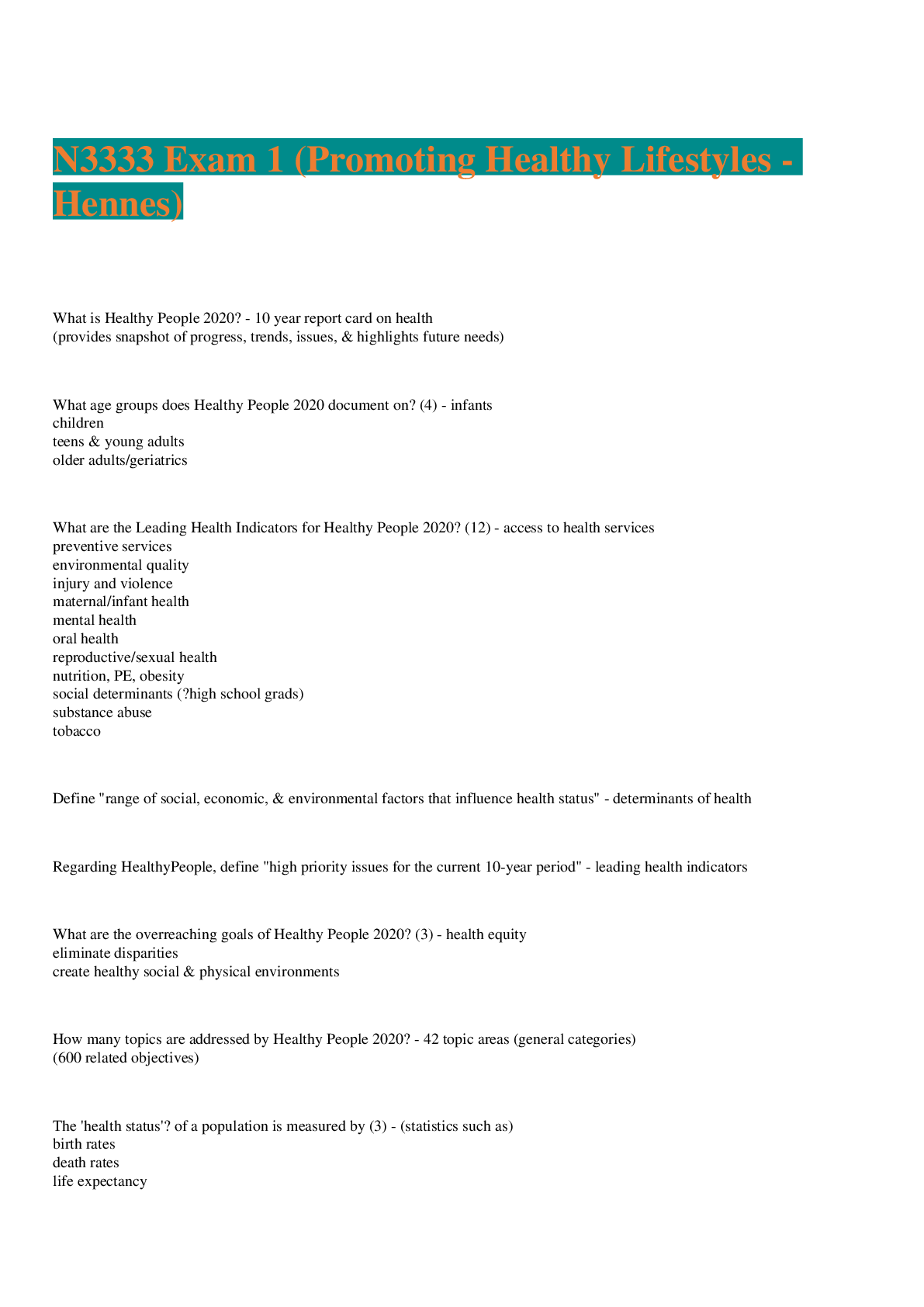
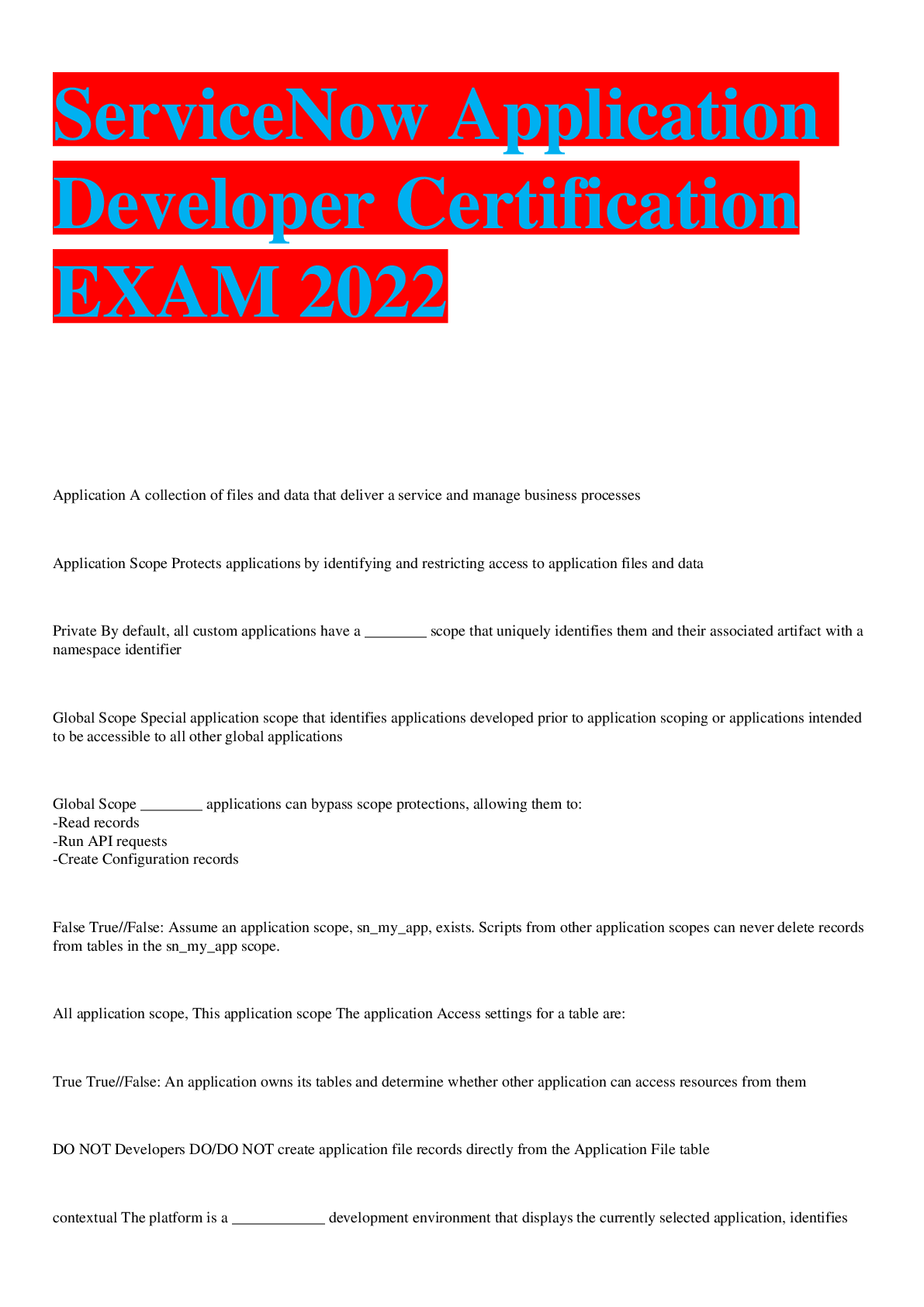
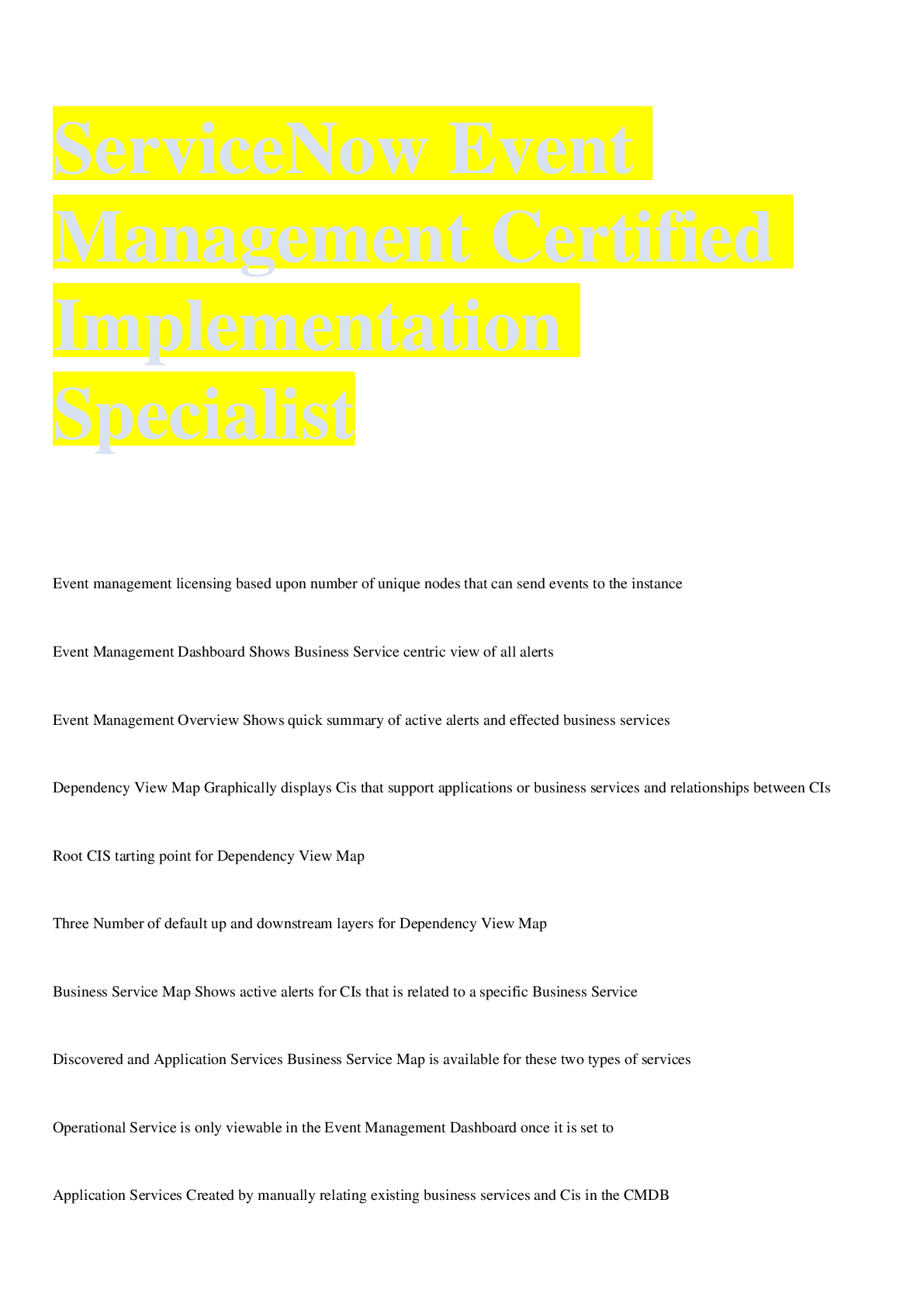
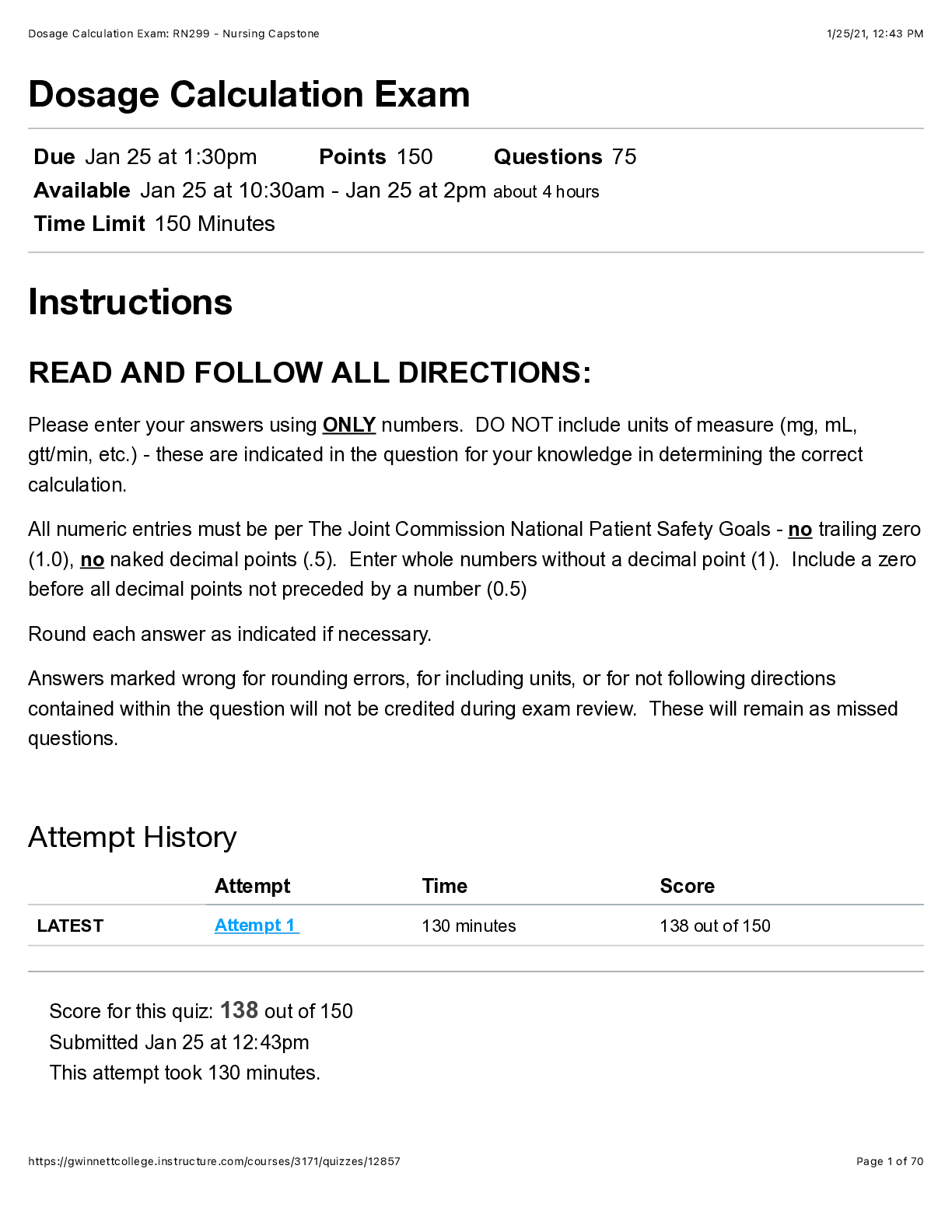
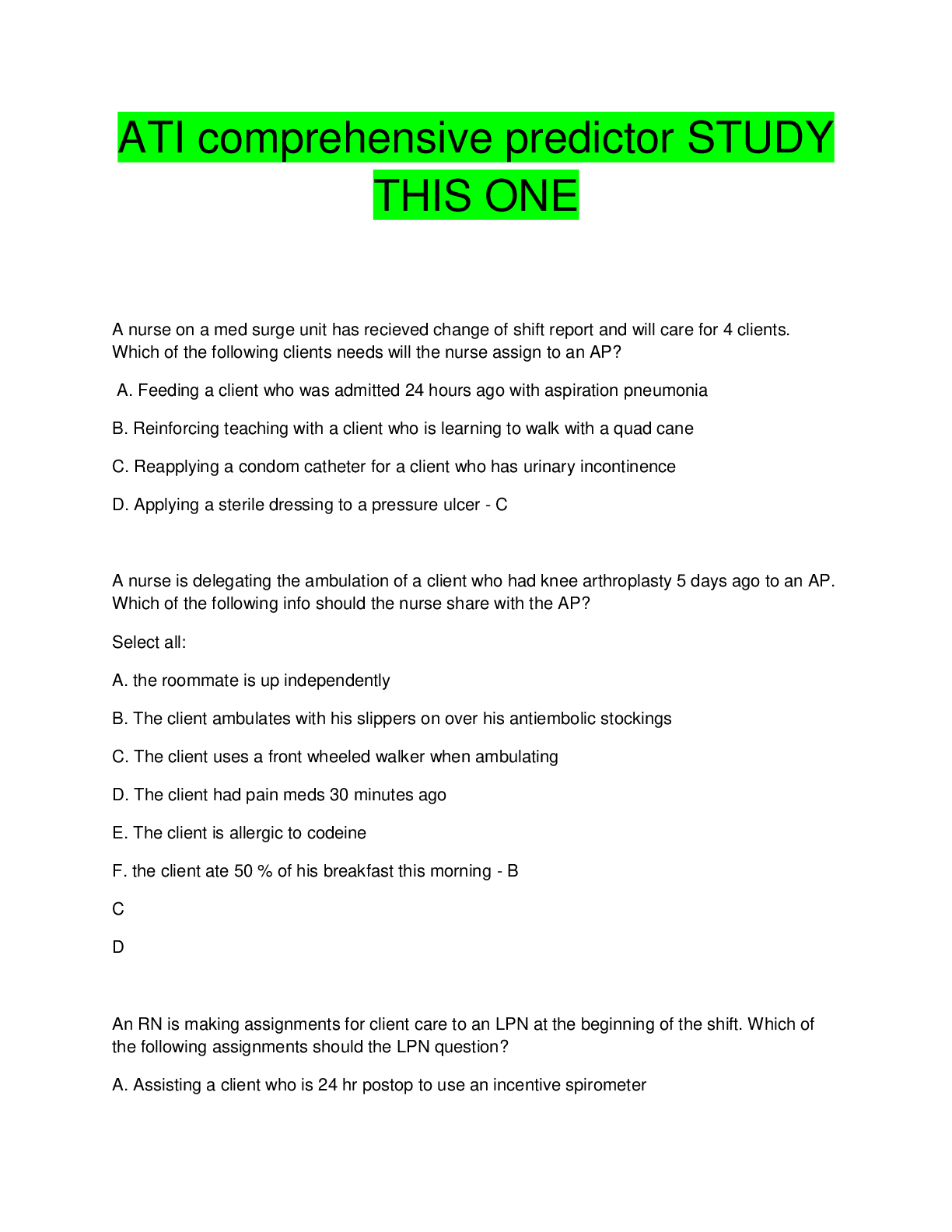

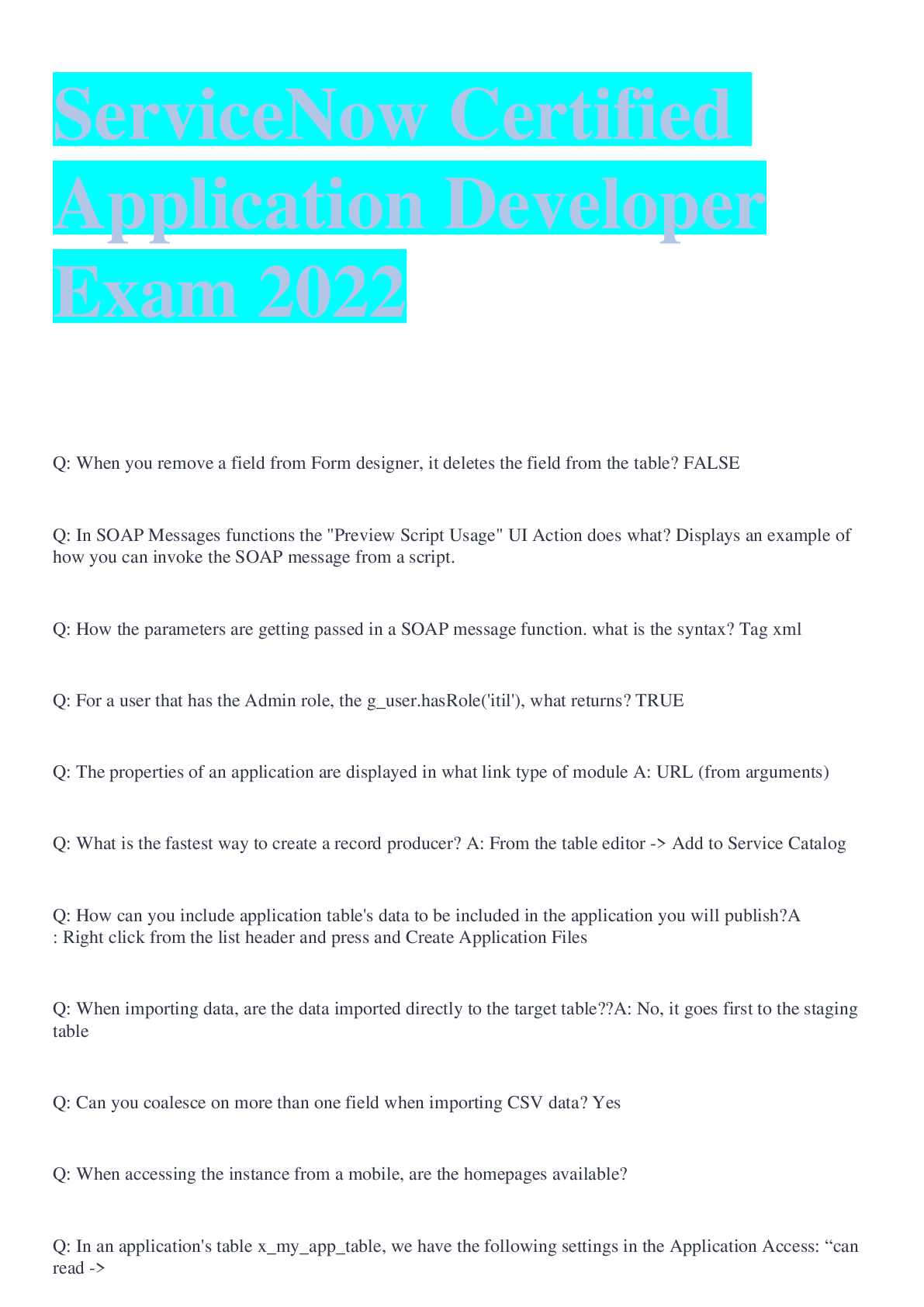
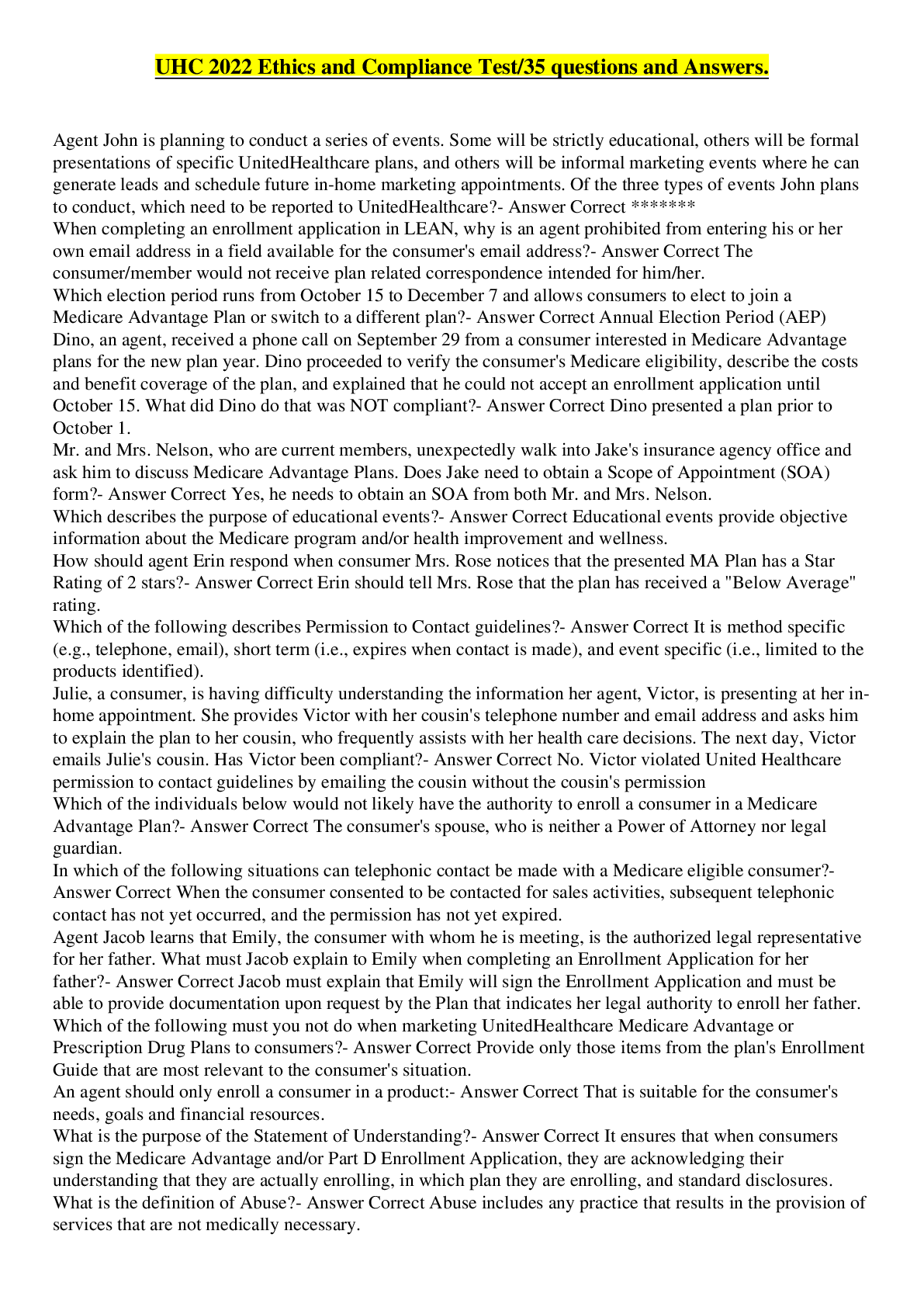

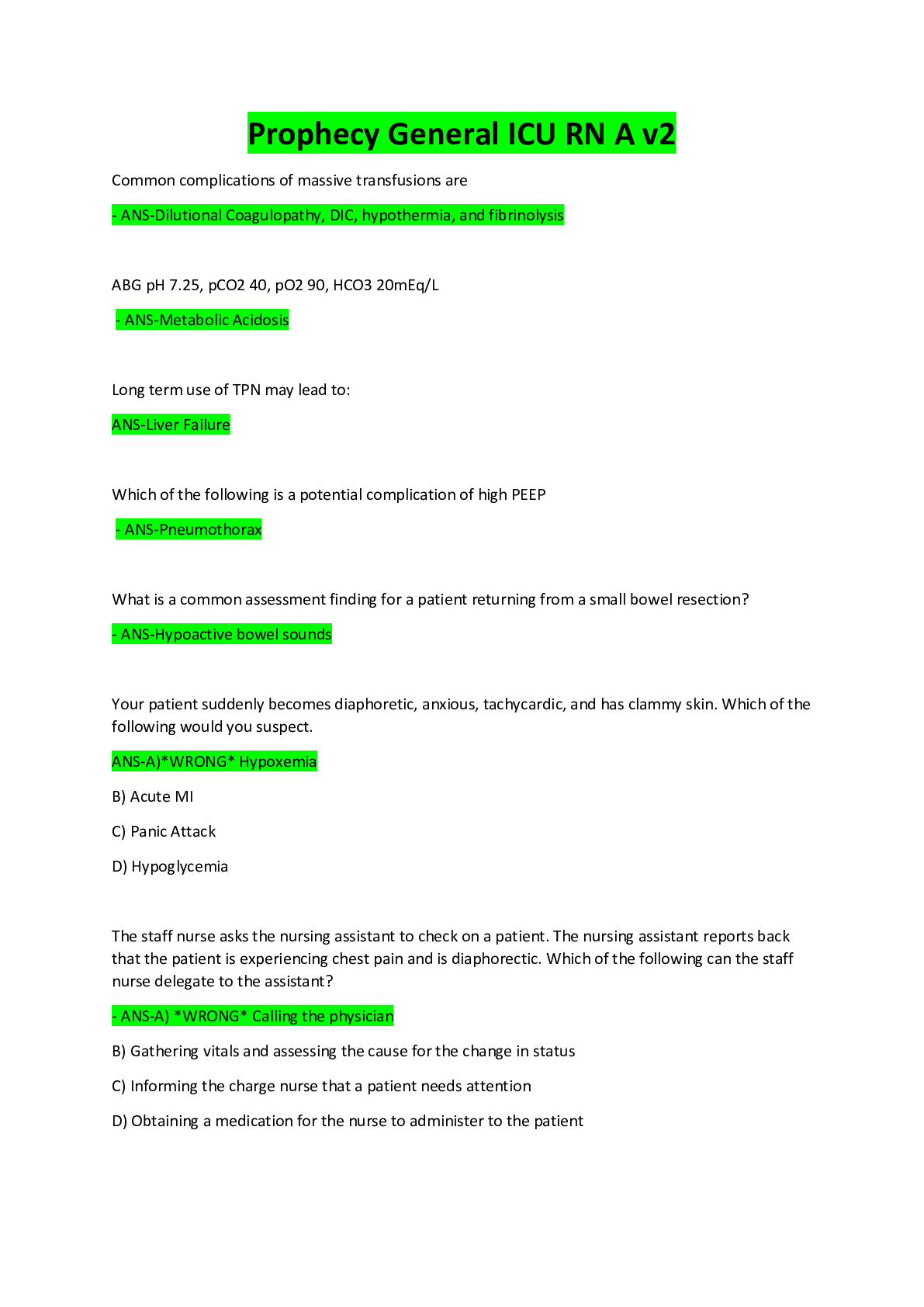


.png)
